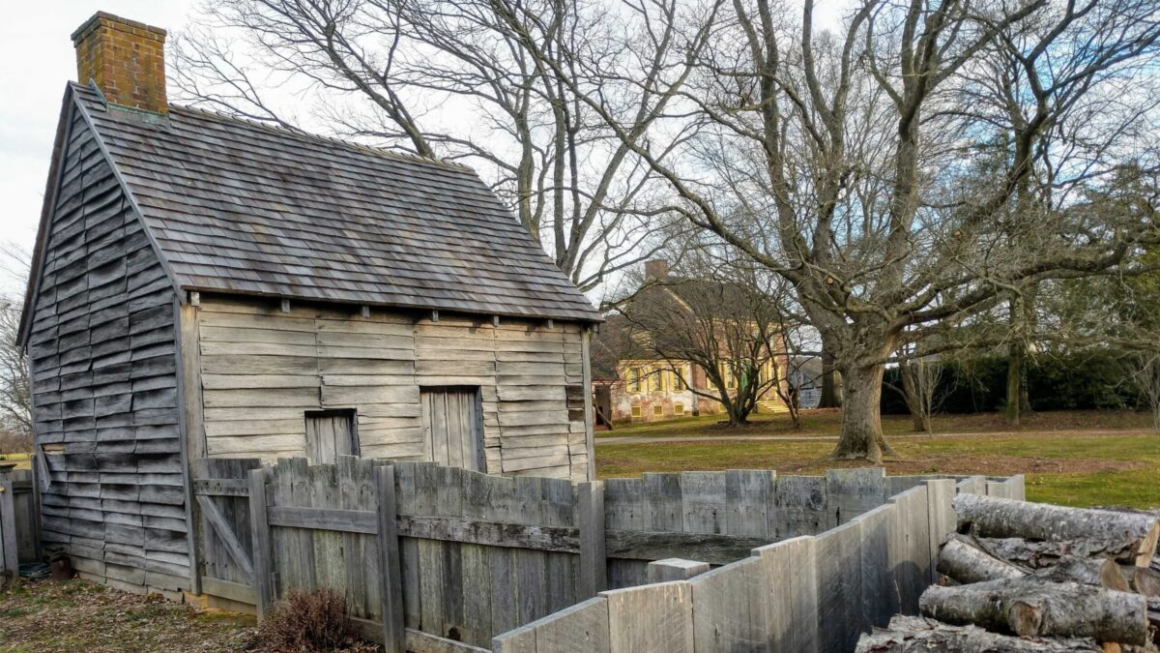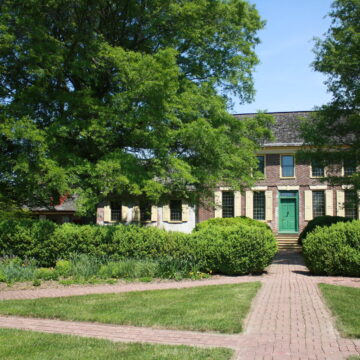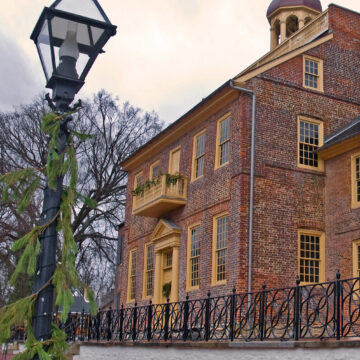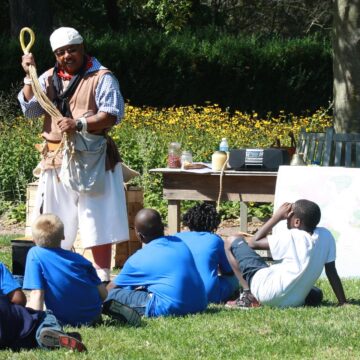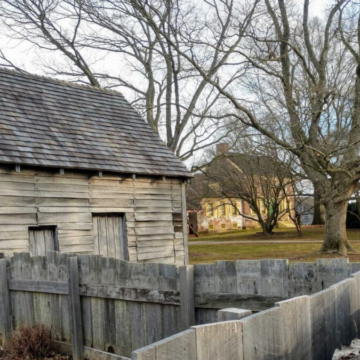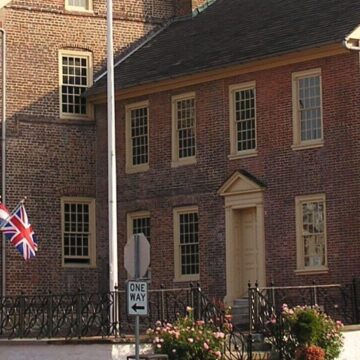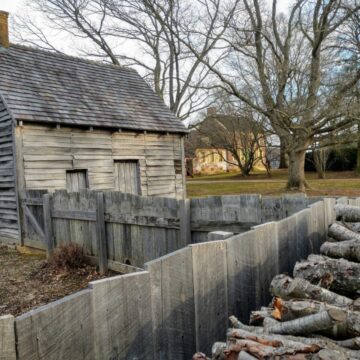John Dickinson, known as the “Penman of the Revolution,” was one of America’s Founding Fathers who helped create this nation and wrote of freedom and liberty for all while holding human beings in bondage.
Samuel Dickinson, a tobacco farmer, merchant and slaveholder in Talbot County, Maryland, began creating the plantation in Delaware beginning in the 1730s. He purchased and combined several tracts of land which stretched from the Dover, Delaware area to the St. Jones River. By 1740, Samuel Dickinson, his wife Mary, and their two young sons, John and Philemon resided in the newly built Georgian brick mansion. The plantation was named Poplar Hall, where an unknown number of enslaved men, women, and children labored to grow tobacco and eventually wheat, and corn.
In 1760, Samuel Dickinson died and the Delaware lands and the enslaved men, women and children were divided between his sons, John and Philemon Dickinson. John Dickinson became the owner of the mansion, the surrounding land and many of the enslaved individuals. By 1767, the mansion became a tenant house. John Dickinson leased the mansion, the grounds, his other nearby properties, and the enslaved men, women, and children to tenant farmers in exchange for money, crops, products, and animals. He rented the enslaved individuals, among whom were tailors, shoemakers, tanners, spinners, and carpenters to others that needed labor and made them available to his tenants to help them fulfill their lease agreements.
In 1777, John Dickinson enacted a conditional manumission of African Americans he held in bondage. The condition included 21 years of service. http://digitalhistory.hsp.org/pafrm/doc/manumission-john-dickinsons-slaves-may-12-1777-march-27-1779
In 1781, he unconditionally manumitted or set free 6 men, women, and children. Five years later, in 1786, he signed an unconditional manumission that released all the enslaved individuals he owned from bondage. Some of the African Americans were employed by the Dickinsons, some of the children were indentured to John Dickinson, and some of the seniors lived on the property and were not to be disturbed.
Owning more than 5,000 acres, John Dickinson engaged in tenancy practices with both white and Black men and women. Throughout the years, some of the farm lands were leased to tenant farmers who owned enslaved individuals. After 1786, the John Dickinson Plantation was home to tenant farmers, tradespeople, free Blacks, indentured servants, and enslaved individuals.
John Dickinson died in Wilmington, Delaware in 1808. The plantation passed to his daughter Sally Norris Dickinson and remained in the family until the 20th century when it passed through a series of owners. In 1952, the National Society of the Colonial Dames of American in the State of Delaware, purchased the mansion and presented the site to the State of Delaware. The John Dickinson Plantation opened as a museum in May 1956.
The historic site has a visitor center, an historic mansion, recreated outbuildings, a recreated slave/tenant house, a colonial revival garden and an African burial ground. The outbuildings include a feed barn, a stable, a double corn crib, a granary and a functional smokehouse.
The Five Stories exhibit, located in the visitor center, highlights the lives of the Dickinson family, the tenant farmers, the enslaved individuals, and the free Blacks.
In 2008, the John Dickinson Plantation became a member of the National Park Service’s National Underground Railroad Network to Freedom program https://www.nps.gov/orgs/1205/index.htm. An exhibit highlighting three documented freedom seekers was placed in the visitor center.
The John Dickinson Plantation is one of the six sites that comprise the First State National Historical Park https://www.nps.gov/frst/index.htm.
In 2020, the John Dickinson Plantation became a member of the International Coalition of Sites of Conscience https://www.sitesofconscience.org/en/home/.
The John Dickinson Plantation is administered by the Delaware Division of Historical and Cultural Affairs.
[/cmsmasters_text]
[/cmsmasters_column][/cmsmasters_row]


